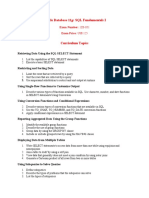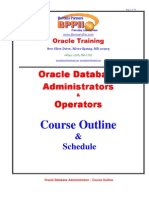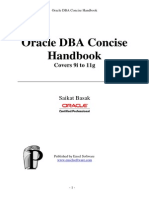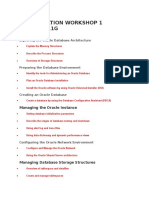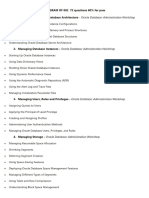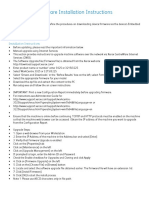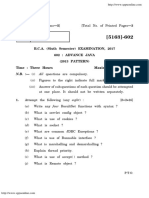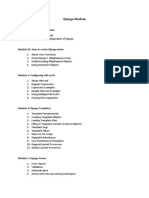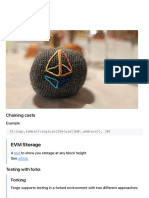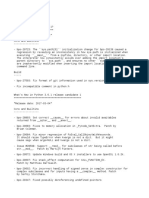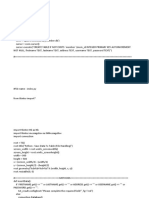0% found this document useful (0 votes)
7 views12 pagesOracle Notes1
The document provides a comprehensive Oracle DBA syllabus and easy learning notes tailored for interview preparation. It covers essential modules such as database architecture, installation, administration, backup and recovery, performance tuning, high availability, security, advanced topics, and tools. Additionally, it includes interview tips and recommended resources for further study.
Uploaded by
dgiri2006Copyright
© © All Rights Reserved
We take content rights seriously. If you suspect this is your content, claim it here.
Available Formats
Download as DOCX, PDF, TXT or read online on Scribd
0% found this document useful (0 votes)
7 views12 pagesOracle Notes1
The document provides a comprehensive Oracle DBA syllabus and easy learning notes tailored for interview preparation. It covers essential modules such as database architecture, installation, administration, backup and recovery, performance tuning, high availability, security, advanced topics, and tools. Additionally, it includes interview tips and recommended resources for further study.
Uploaded by
dgiri2006Copyright
© © All Rights Reserved
We take content rights seriously. If you suspect this is your content, claim it here.
Available Formats
Download as DOCX, PDF, TXT or read online on Scribd
/ 12



























